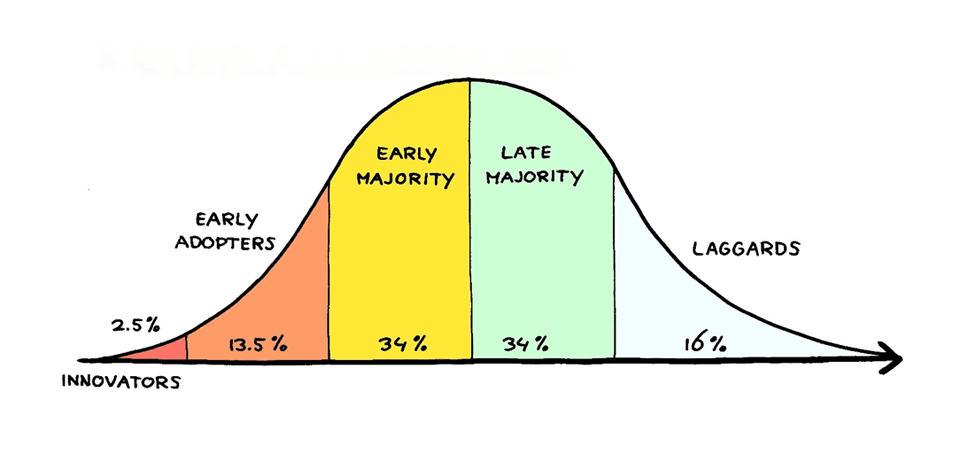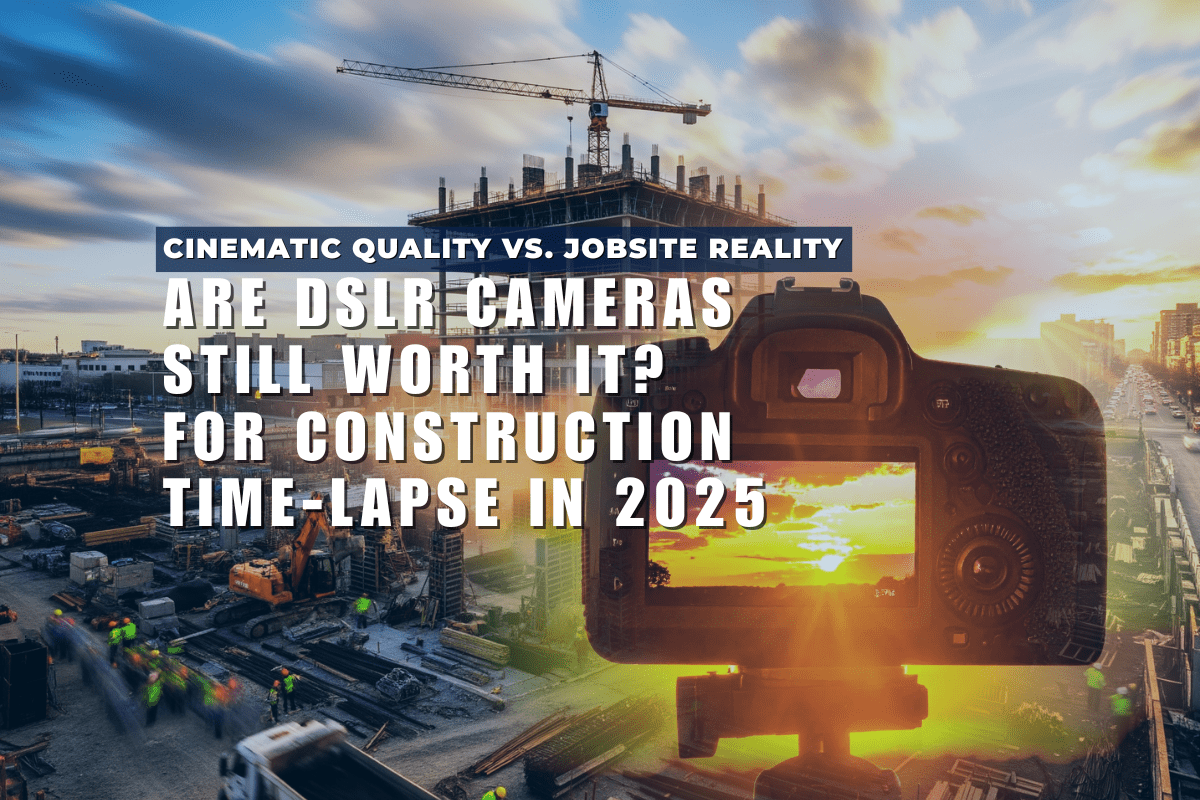Anyone that works in construction knows that the industry has a reputation for being slow to adopt new technology.
The technology adoption lifecycle illustrates the concept.

It's a bell curve divided between the innovators, early adopters, the early majority, the late majority, and the laggards. This illustration depicts the overall industry percentages that fall into each category.
Construction sits in the laggards category, second to last behind hotels and restaurants.
Other industries that fit into the laggard category include agriculture, consumer goods, transportation, and logistics.
In order to improve productivity and efficiency, construction needs to move leftwards towards the early majority end of the adoption curve.
It's not the industry's fault
The industry has the appetite to take new technologies in order to modernize and improve productivity. The reason for being laggards is that there is a high dollar volume of low-margin activity across many different stakeholders.
This makes it hard to justify a large capital investment in new technologies by any one stakeholder especially if those technologies have not been proven at scale.
BIM is a step in the right direction
Starting in the 1970s, BIM, or Building Information Modelling, began to emerge. BIM creates a digital representation of a physical asset such as a building or structure. The original BIM data sets were proprietary to a given software vendor. This made it difficult for new systems to integrate data from design, build, and management systems in order to create efficiencies.
What has changed more recently is a standard BIM format which has created interoperability between platforms.
It is now possible to design new platforms that work across the entire construction lifecycle.
Enter Venture Capital
Prior to 2019, the estimated venture capital investments in the construction industry was a few hundred million.
Like other laggard industries, venture capital saw the opportunity for a major disruption.
In 2019 venture capital investment in construction soared to six billion. This capital is chasing opportunities similar to what we saw with Uber in the transportation industry.
7 innovations to change the construction industry
Following are some of the categories of innovation that this influx of venture capital are enabling.
- AI and machine learning-enhanced workflows - enhancing the mostly manual and complex workflows via algorithms.
- 3D printing - as the 3D printing industry matures, more and more opportunities for better, just in time, fixtures and parts will emerge.
- Augmented and Virtual Reality - these technologies will allow teams to collaborate in two game-changing ways. At the design stage, teams can meet in the virtual world to experience and collaborate on the design. During construction, experts can be brought onto the construction site to inspect and troubleshoot work.
- Sensor data - sensor and IoT devices will enhance all aspects of jobsite tracking and improve the movement of labor and materials.
- Digital twins - a digital twin of any structure allows teams to assess and improve any aspect of a building in the digital world before committing to the labor and materials in the physical world.
- Connected systems - seamlessly connecting the design, construction, and management systems of the industry provides opportunities for major improvements in efficiency.
- Advanced takeoff and estimating tools - having automated systems to estimate a job’s material and labor costs will increase both speed and accuracy.
A brighter and more efficient future
The industry is responding to these new opportunities. Most construction companies have created an innovation department that is prepared to test emerging technologies.
There are also examples of construction companies creating internal venture groups to help fund promising new technologies.
We are now seeing many examples in the construction industry of companies that are moving from the laggard basement and into the early adopters' category.




